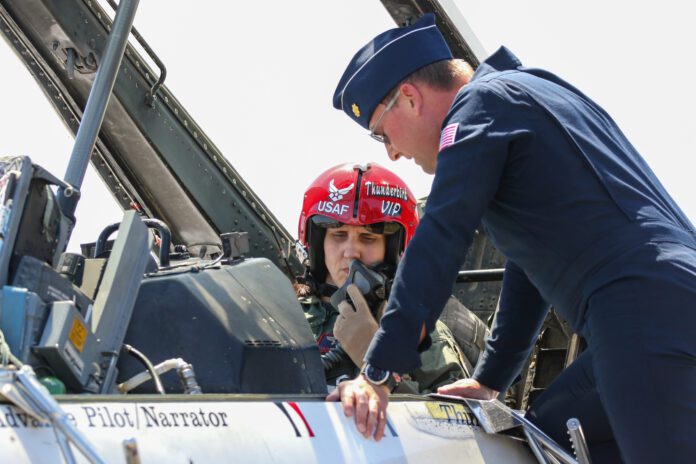Story and photos by Scott W. Grau
TOLEDO – Surreal. That’s the only word that Toledo Fire and Rescue Department chief Allison Armstrong can think of to describe her unique opportunity to fly in a U.S. Air Force Thunderbirds F-16 Fighting Falcon jet.
“It didn’t feel real until we were in that jet and taking off,” she said.
Once Armstrong and advance pilot/show narrator Maj. Brandon Maxson were airborne, she exclaimed that “it was amazing!”
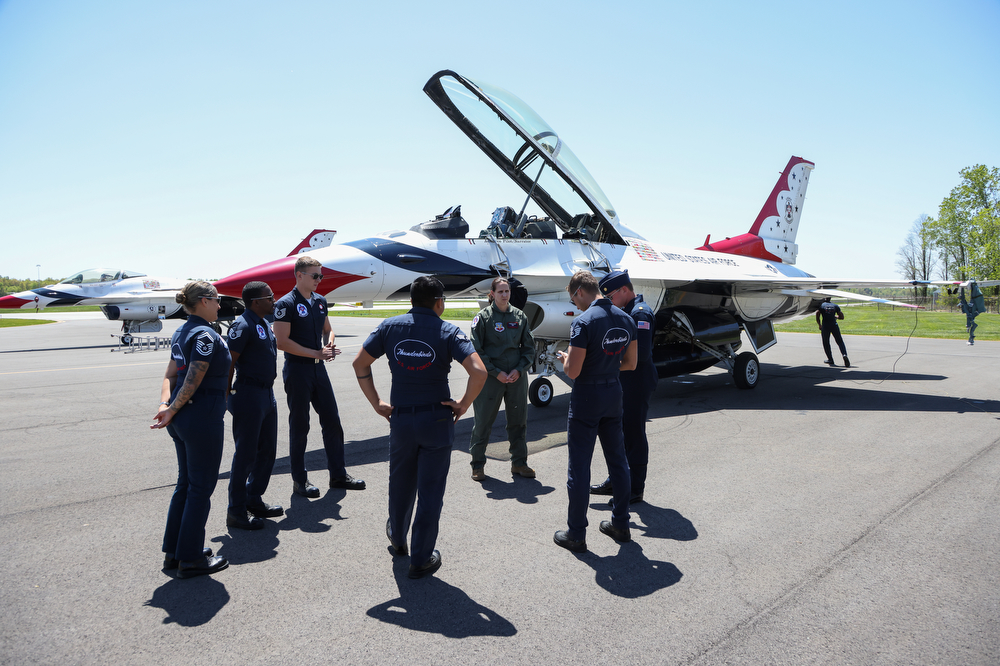
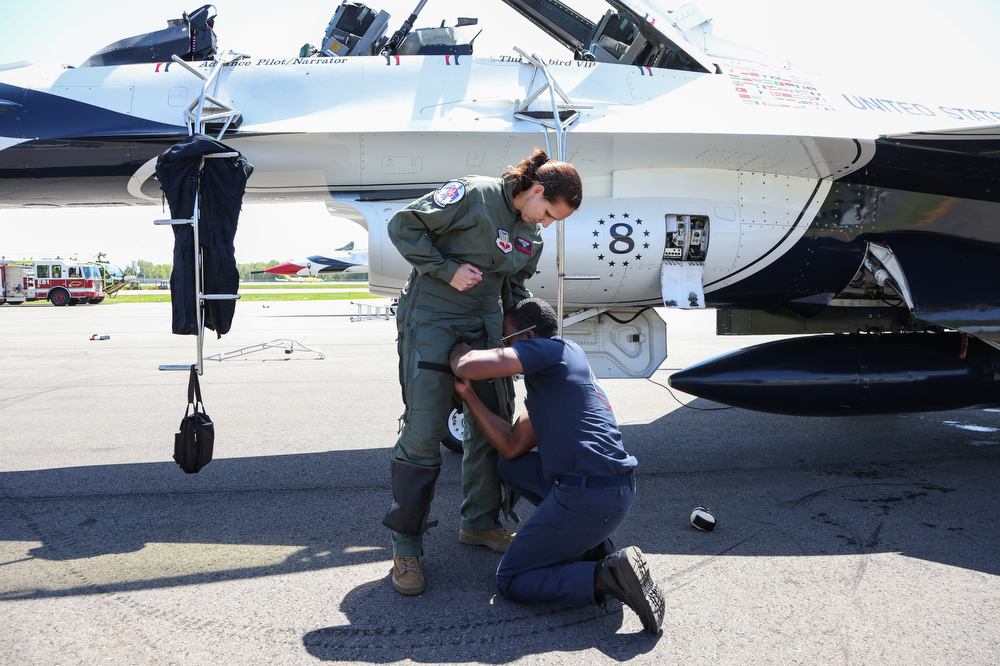
Armstrong had the honor of flying with the Thunderbirds during their dress rehearsal performance on Friday, May 9, a day before the Toledo Air Show officially was held during the Mother’s Day weekend.
The Thunderbirds, officially the USAF Air Demonstration Squadron, were formed in 1953 and are assigned to the 57th Wing at Nellis Air Force Base in Nevada. Their primary mission is to support U.S. Air Force recruiting and retention efforts, along with demonstrating the professional skills of Air Force personnel. They perform their air shows with six F-16 Fighting Falcon jets, showcasing formation flying and solo maneuvers.
The squadron is very community-oriented and offer the Hometown Hero program wherever they are performing.
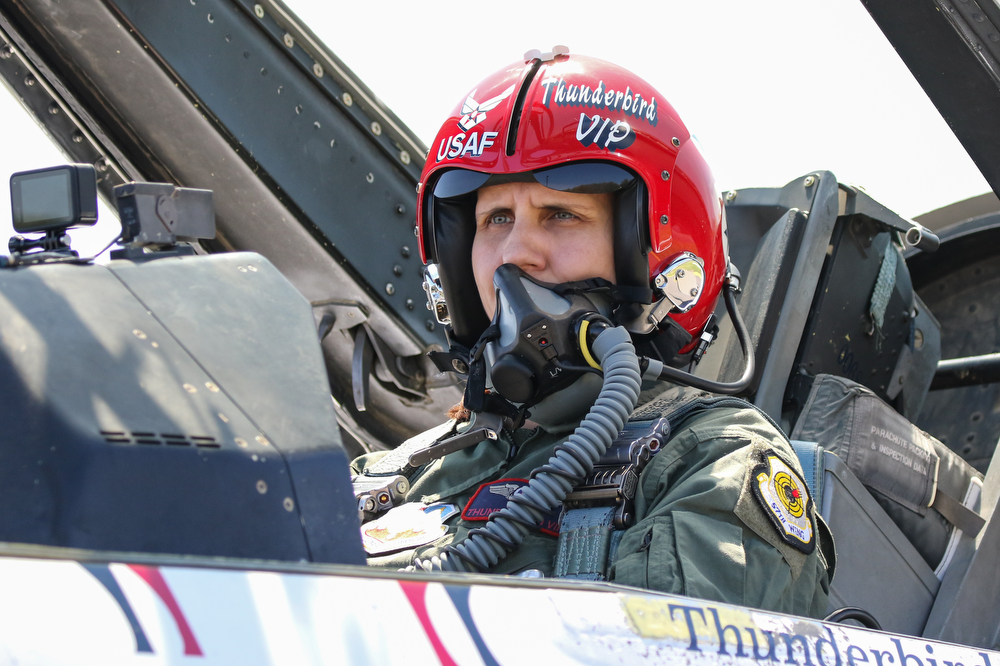
The Hometown Hero Program offers individuals who have made a significant positive impact on their communities an opportunity to fly in the backseat of a Thunderbird F-16. These “Hometown Heroes” are nominated for their service, sacrifice and dedication. The program aims to recognize and honor their contributions while showcasing the capabilities of the Air Force.
Armstrong was nominated by the Air Show committee. She was one of several people whose names were presented to the USAF Thunderbirds and ultimately deemed to be the ideal candidate as the Toledo Air Show Hometown Hero.
Prior to climbing into the cockpit, she met with the Thunderbirds flight surgeon to be briefed on how to properly use the G-suit that she would wear, and how to breath and brace so that she didn’t black out during the high G-force maneuvers she would be enduring.
The Thunderbirds ground support crew fitted her for a G-suit, harness, helmet and face mask. After that, she sat in on the pilot and team briefing sessions.
For Armstrong, the experience didn’t feel real until the canopy began to lower and the jet began to roll. At that point, she said that she was “excited, nervous and terrified all at the same time.”
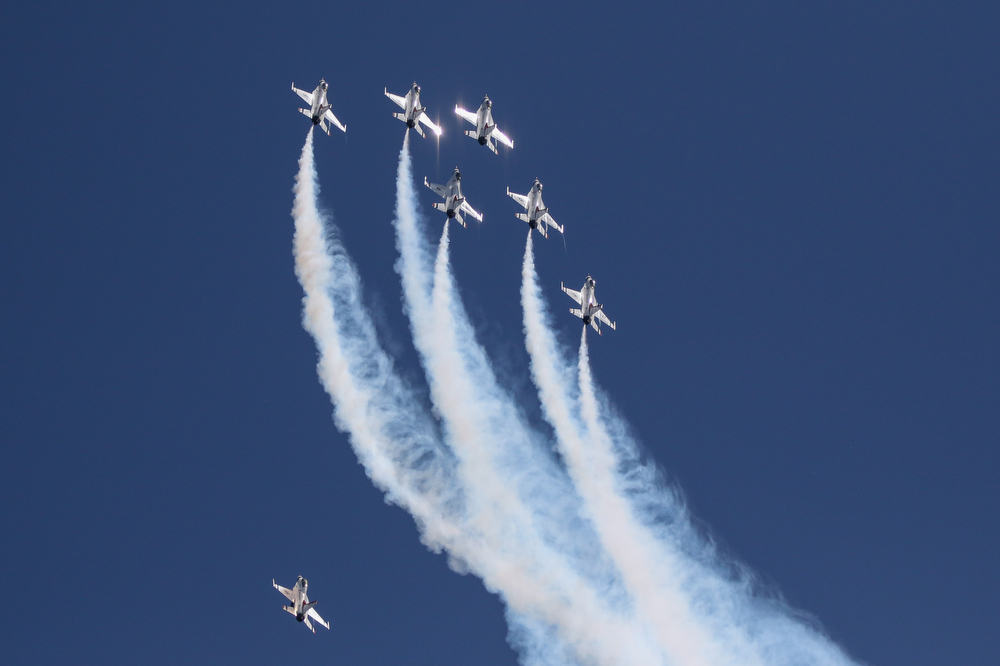
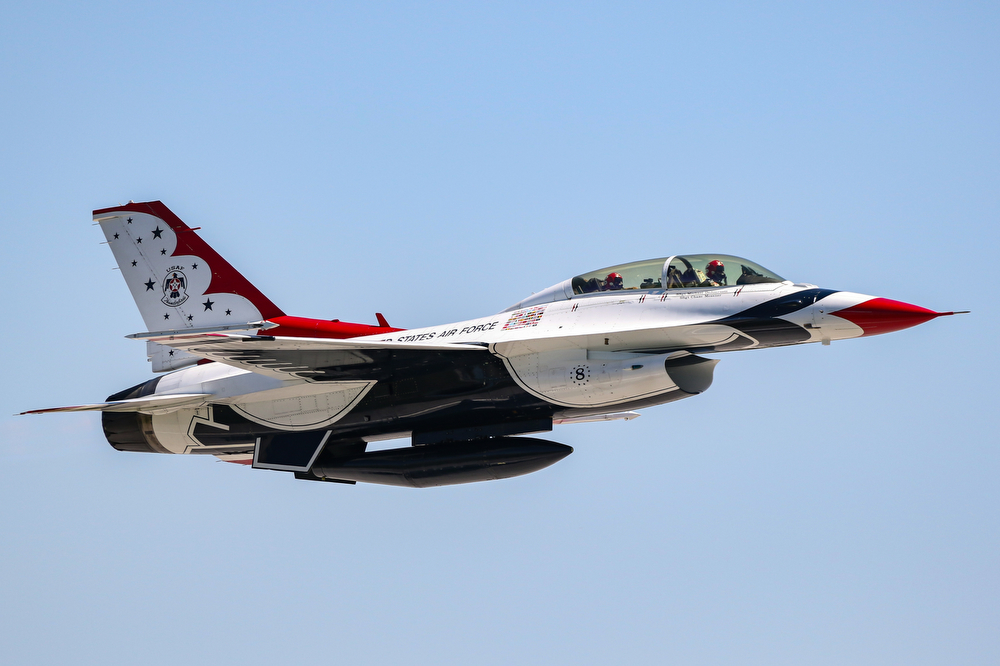
Armstrong’s jet took off and climbed three miles into the sky, allowing her to watch the entire Thunderbirds show routine from high overhead. Her jet performed the same maneuvers that were done by the team, and it trailed behind during group formations.
“I didn’t realize that the flight was part of the dress rehearsal,” said Armstrong. “It was absolutely amazing to be behind the other group and to see the planes in formation.”
At some point during the flight, the pilot let her fly the jet.
On Sunday, Armstrong watched the Thunderbirds show as a spectator from the ground.
“The view from the air is much different than the view from the ground. Watching the show from the ground tied it all together,” she said.
Reflecting on her experience to fly with the Thunderbirds, Armstrong said she was “extremely grateful that they thought of me and I got an opportunity that most people will never get. Me climbing into an F-16…I never thought that I [would] be there in a million years.”


